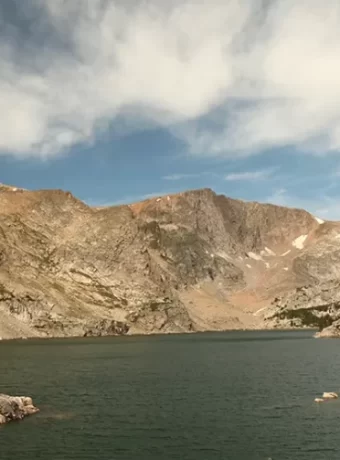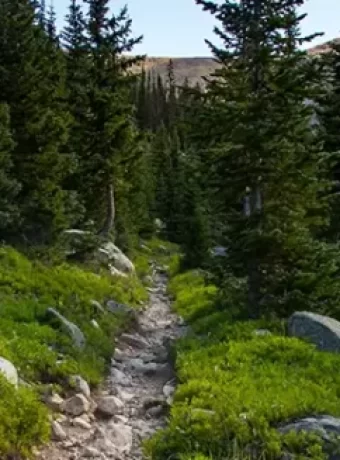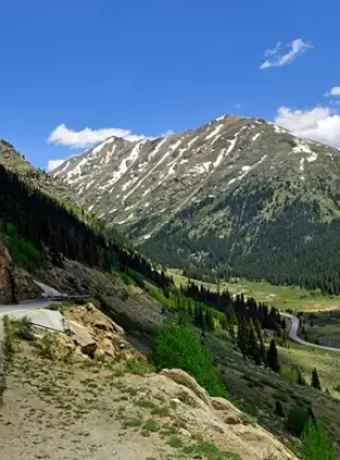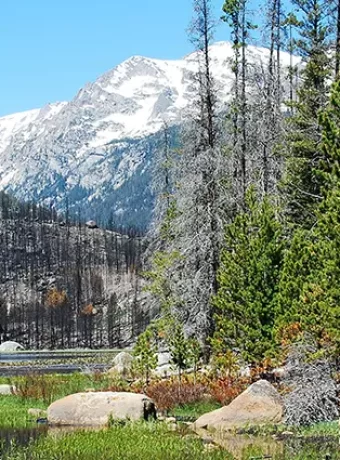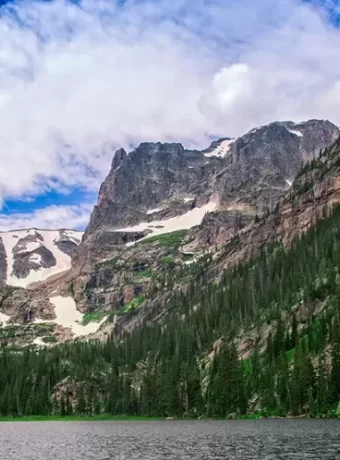DIY Fly Fishing South Fork Flathead River Montana
Ever dreamed of wading through crystal-clear waters with nothing but your thoughts and trout for company? Welcome to the ultimate guide on DIY fly fishing in the south fork of flathead river Montana. This journey isn’t just about casting lines; it’s a deep dive into nature’s untouched beauty where every cast brings you closer to mastering these wild waters. Imagine breathtaking views and fish that practically leap onto your hook – this adventure is exactly what anyone who loves fly fishing could ever hope for.
Planning Your DIY Fly Fishing Adventure on the South Fork Flathead River
Choosing the Right Time of Year
It’s time to start dreaming about the best summer fly fishing trips, and if we are limited to doing so within our state borders this year, I drew a good card—Montana offers a lifetime of fly-fishing adventure and gas is cheap right now (LOL). One of the best Big Sky Country trips you could take is to the South Fork Flathead River in northwest Montana.
The year we floated was a low snowpack year. That changed our plans. We were going to come in from the Blackfoot Valley to the south. Once picking up Danner Creek, beginning our float trip at that point. More on route change to come.
The South Fork Flathead River flows through the heart of the Bob Marshall Wilderness, a pristine wilderness area that offers some of the best DIY fly fishing opportunities in the state. The best time to plan your adventure is mid to late summer, when the river flows are low and clear, and the trout are eager to rise to dry flies.
Packing for Your Trip
You can’t just say one day, I’m going to fish the South Fork and race up there. Access is via horseback, backpacking, or day hiking, so you need to plan ahead and be prepared with the right gear and provisions for a multi-day wilderness adventure.
Here are some essential items to pack for your South Fork Flathead fly fishing trip:
- Waders and wading boots ( I would pack wader, though I never wore them once. Legging, wading shoes, wet wading was perfect for me.)
- Raft: we used a 16 foot with a custom frame. Person in back sat on gear.
- Fly rod, reel, and line (5-6 weight is ideal w/ a spare fly rod)
- Flies (dry flies, nymphs, and streamers)
- Backpacking tent and sleeping bag
- Camping stove and cookware
- Bear spray (you’re in grizzly country.)
- First-aid kit
- Headlamp or flashlight
- Maps and compass or GPS
- Personal Beacon Responder
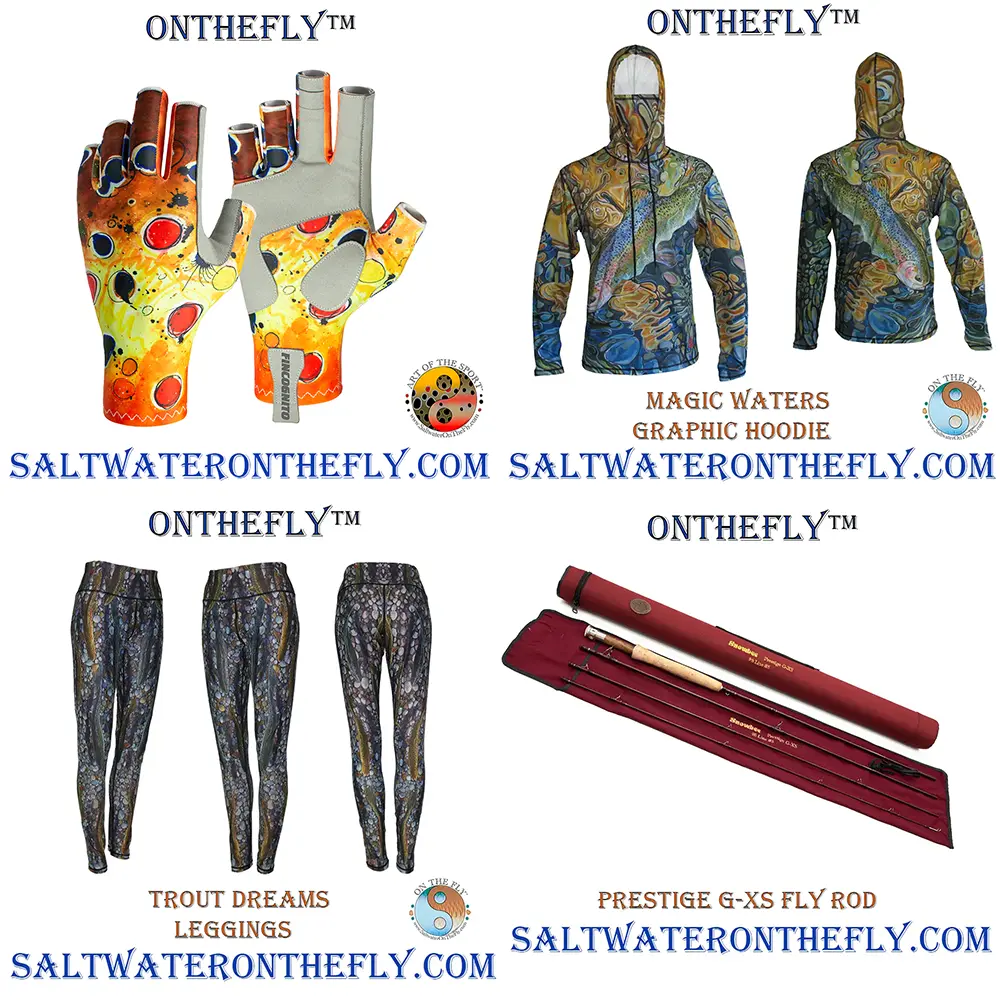
Sun protective rowing and fly fishing gloves. Graphic Hoodie is a great base layer or outer layer on warmer days. Leggings with the right fly fishing gear for success on your adventure.
Remember, you’ll be fishing in a remote wilderness area, so it’s important to pack light but also be prepared for any situation. Consider hiring a local outfitter to help with logistics and provide expert guidance on this Montana river. If not experienced at rowing rivers. Talk with the Locals and outfits like Chef’s Guest Ranch. They might pack you in and out. Or direct you to someone who can. We guided ourselves, since we are guides to begin with. Our Vacation Fly Fishing in the “Bob”.
Navigating the Wilderness: From Trailhead to Trout Streams
Preparing for the Hike
Let our fly fishing guide show you one of the most remote, trout-filled rivers in Montana on a fishing specific South Fork Flathead trip in the heart of Montana’s backcountry. We start the trip with a two-day ride (or hike) through spectacular scenery through the Bob Marshall Wilderness to access the starting point of the float.
The journey begins at Holland Lake up over Gordon Pass into the “Bob”. Packing our gear up over Gordon Pass by mule train. Spent the first night after a 15 mile hike at Cabin Creek Ranger Station.
Next day hiked 16 miles to the confluence of Danner Creek and South Fork Flathead River. One of the mules decided it didn’t wish to be with the others and hiked with us to the river this day. Meadow Gorge is where you’ll take out. And hike to Meadow Creek Trailhead, where you’ll end your trip after shouldering your gear out. Or hire someone with a team of mules, like we did.
It was a trip of nature and us. Only encountered less that 10 folks in 8 days.
Setting Up Camp
After a long day on the trail, it’s time to set up camp along the banks of the South Fork Flathead. Look for a flat spot with good access to the river and plenty of trees for shelter and firewood.
At camp, likely under phenomenal stars, we’ll stoke a fire, make hot chocolate and toast the Bob Marshall Wilderness. Though that’s not how it really was, I made strawberry margaritas, froze them and packed on dry ice. That’s what was serviced at first night’s campfire. Perhaps in the forest we’ll hear an elk bugle or a wolf howl or a grizzly growl. And, without words, on a calm summer night in Montana we’ll agree that few fly fishing locals offer as much as the South Fork Flathead.
Get a good night’s rest, because tomorrow the real adventure begins – casting flies to eager cutthroat trout in one of the most pristine and remote wilderness settings in the Lower 48. The memories you make on this trip will last a lifetime.
Journey Down South Fork Flathead River Begins
On the third day we’re up early, had breakfast rigged rods and got ready for a day on the river. Float down the South Fork Flathead is around 60 miles. The group I was sharing the river with all opted to float 10 miles a day and enjoy the experiences. Total length of excursion was ten incredible days. We actually planned and left very early part of summer. On the river we only encountered on other party in 6 days of fly fishing South Fork Flathead River.
Around the second day arrived at the confluence of the white River. At the point where the two meet is a beautiful meadow with Ponderosa Pines so large in circumference 3 adults could barely touch finger tips. Meadow was a patch work of wildflowers.
Come the third or fourth day we decided to hike up Salmon Lake. Hike to Salmon Lake was a beautiful panoramic 5 hour out and back journey.
Days five and six your float wanders through canyons and meadows on the way to the Gorge at Meadow Creek. At Meadow Creek we spend the night and get ready for our morning pack out.
I honestly don’t remember the largest fish. I remember being on a remote river with friends.
South Fork Flathead River Tip:
Plan your DIY fly fishing trip to Montana’s South Fork Flathead River for a summer adventure with essential gear, mindful packing, and readiness for the backcountry. Embrace the wilderness from trailhead treks to tranquil trout streams under starlit skies.
Essential Gear and Tactics for South Fork Flathead Success
Selecting the Right Fly Patterns
When it comes to fly fishing tactics on the South Fork Flathead River, selecting the right fly patterns is key. The native westslope cutthroat trout here are known for being feisty and eager to rise to a well-presented dry fly.
According to our guides, some of the top producing patterns include:
- Elk Hair Caddis
- Parachute Adams
- Stimulators
- Hoppers (in late summer)
- Ants and beetles
Having a variety of these flies in different sizes will help you match the hatch and fool even the wariest of trout. As one local expert notes, “Hatches on the South Fork of the Flathead River include caddis, mayflies, spruce moths, and many terrestrials including hoppers, ants, and beetles.”
Understanding River Flows
Getting a grip on how the South Fork Flathead’s waters ebb and flow is another piece of the puzzle if you’re aiming for success. This wilderness river can fluctuate significantly throughout the season, impacting fish behavior and accessibility.
As one avid angler puts it, “These mid to late summer expeditions are best experienced when this high country river flows low and clear, and trout willingly rise to attractor patterns.”
Timing your trip for optimal conditions can make all the difference. Generally, flows are best from mid-July through September. But always check current conditions and forecasts before heading out.
By dialing in your fly selection and keeping a pulse on river levels, you’ll be well on your way to an unforgettable fly fishing adventure on the South Fork Flathead. The stunning scenery and eager westslope cutthroat are sure to leave a lasting impression.
The Art of Catch and Release in Pristine Wilderness Waters
Practicing Sustainable Fishing Practices
When fly fishing in a pristine wilderness area like the South Fork Flathead River, practicing catch and release is not only encouraged – it’s essential for preserving the health and beauty of this incredible resource.
The crystal clear waters here are home to thriving populations of native westslope cutthroat and bull trout. By carefully releasing fish back to their habitat, we ensure that future generations can experience the same joy and wonder of this special place.
Here are some tips for proper catch and release:
- Use barbless hooks for easier release.
- So, remember to keep those fish in water as much as possible and cut down on the time you handle them. Avoid touching their gills or eyes.
- If taking a quick photo, hold the fish gently above the water. Make it snappy and return them quickly.
- When releasing, face the fish upstream and cradle them in the current until they swim away under their own power.
Remember, these fish are precious and deserve our utmost respect and care. As one conservation-minded angler reflects, “Overall, the South Fork Flathead is a great trout stream, a place where anglers may expect good fishing, some solitude and gorgeous scenery… When the time comes, I’ll take my children to the river and teach them to fish dry flies for eager cutthroats.”
So, by embracing our role as caretakers and practicing catch and release the right way, we’re setting up the South Fork Flathead and its incredible trout to thrive for generations. Let’s lead by example and be guardians of this irreplaceable resource.
South Fork Flathead River Tip:
Master the art of fly fishing in Montana’s South Fork Flathead River by picking the right flies and timing your trip with river flows. Protect this pristine wilderness by practicing catch and release, ensuring future generations can enjoy its beauty.
Exploring Beyond the River: Hiking to Salmon Lake
Planning Your Route
Come see for yourself why the South Fork of the Flathead is a legendary wilderness fishing trip. But don’t stop there – the adventure continues beyond the river banks.
Hiking up to Salmon Lake is a must-do side excursion. This pristine alpine lake is surrounded by stunning mountain scenery that’ll take your breath away.
So, if you’re aiming for that spot, planning your journey with a bit of thought is the way to go. Your adventure kicks off by the river, then twists and turns through the wild, slowly taking you higher with every step.
It’s not a short jaunt – expect to spend a good part of the day on this adventure. But trust me, it’s worth every step.
As you climb higher, the views just keep getting better. You’ll pass through lush forests and meadows blanketed in wildflowers (if you time it right).
Keep your eyes peeled for wildlife too – this is prime habitat for elk, deer, and even the occasional bear. (More on safety in a bit.)
The trail can be challenging at times, with some steep sections and rocky terrain. But with a little preparation and determination, hikers of most skill levels can make the trek.
When you finally make it to Salmon Lake, a peaceful alpine paradise awaits you as your reward. The crystal-clear waters are fringed by towering peaks, creating a picture-perfect scene.
Now, pause for a moment to really let that sink in. Snap some photos, enjoy a well-earned snack, and just breathe in that crisp mountain air.
If you’re feeling adventurous (and the weather cooperates), you might even take a refreshing dip in the icy waters. Talk about invigorating.
What to Bring on Your Hike
Now, let’s talk about gearing up for your hiking adventure. Having the right gear can be a game changer when it comes to how comfy and safe you feel.
First and foremost, wear sturdy, comfortable hiking boots. You’ll be tackling some rugged terrain, so good ankle support and traction are key.
Dress in layers so you can easily adjust to changing temperatures. Moisture-wicking, quick-drying fabrics are your friend out here.
Don’t forget to pack plenty of water and snacks to keep your energy up. A hydration pack or water bottles are a must.
Other essentials include:
- Map and compass (or GPS device)
- First-aid kit
- Sunscreen and hat
- Insect repellent
- Bear spray (just in case.)
- Camera to capture the stunning views
It’s also a good idea to let someone know your hiking plans before you set out, just as a safety precaution.
One more tip: pack out what you pack in. The South Fork of the Flathead River is a pristine wilderness area, and it’s up to us to keep it that way.
The South Fork of the Flathead River is stunning in its beauty. Don’t forget your camera on this adventure. The memories you take home will be cherished for a lifetime.
So there you have it – your guide to hiking up to Salmon Lake on your South Fork Flathead fly fishing adventure. Walking along the riverbanks is an awesome opportunity to stretch those legs and dive into the amazing wild areas that lie just beyond.
With a little planning and preparation, you’re in for an unforgettable experience. The breathtaking scenery, the fresh mountain air, the sense of accomplishment when you reach the lake – it’s all part of the magic of the Bob Marshall Wilderness.
So what are you waiting for? Lace up those hiking boots and hit the trail. Salmon Lake awaits.
South Fork Flathead River Tip:
Turn your South Fork Flathead fly fishing trip into an epic adventure by hiking to Salmon Lake. Pack smart with essentials like sturdy boots, layers, and bear spray. The breathtaking views and wildlife sightings are worth every step.
FAQs in Relation to DIY Fly Fishing South Fork Flathead River Montana
What kind of fish are in the South Fork Flathead River?
The river is a hotspot for westslope cutthroat trout. You’ll also find bull trout lurking around, but remember, they’re catch and release only.
Where is the best place to fish in the Flathead river?
For top-notch fly fishing, hit up the stretch below Hungry Horse Dam. It’s teeming with feisty cutthroats and other trout species.
How many days to float the south fork of the Flathead river?
A full float trip usually takes about 7 to 10 days. This gives you ample time to soak in those wild views and cast lines.
Where can I fly fish near Kalispell?
Foys Lake offers quick access from Kalispell for some solid fly fishing action. It’s close by and stocked with plenty of fight-ready trout.
Conclusion of Fly Fishing South Fork Flathead River
So there we have it – your compass pointing towards freedom, set against the backdrop of Montana’s majestic wilderness. The south fork flathead river doesn’t just offer superb fishing; it invites us into a dance with nature itself, challenging our skills while soothing our souls. As you pack up your gear and reflect on each catch (and those that got away), remember this isn’t merely a trip. It’s an experience etched into your story as an angler — one where AI quietly enhances our lives without drama or fanfare, much like those smart assistants making daily tasks easier. Ready for another round? Because these rivers flow all year long and so does our passion for conquering them.
What Will Be Your Next Remote Fly Fishing Excursion
Helicopter into remote British Colombia for Trophy Brook Trout.

